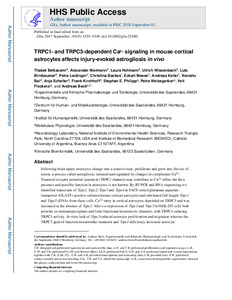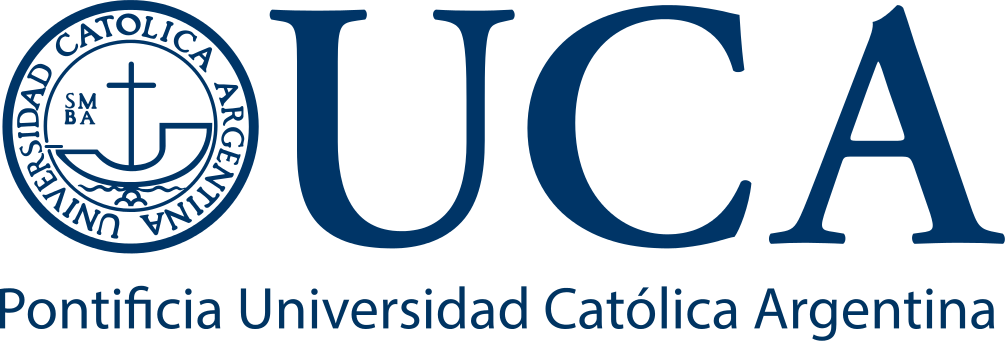Por favor, use este identificador para citar o enlazar este ítem:
https://repositorio.uca.edu.ar/handle/123456789/8724| Campo DC | Valor | Lengua/Idioma |
|---|---|---|
| dc.contributor.author | Belkacemi, Thabet | es |
| dc.contributor.author | Niermann, Alexander | es |
| dc.contributor.author | Hofmann, Laura | es |
| dc.contributor.author | Wissenbach, Ulrich | es |
| dc.contributor.author | Birnbaumer, Lutz | es |
| dc.contributor.author | Leidinger, Petra | es |
| dc.contributor.author | Backes, Christina | es |
| dc.contributor.author | Meese, Eckart | es |
| dc.contributor.author | Keller, Andreas | es |
| dc.contributor.author | Bai, Xianshu | es |
| dc.contributor.author | Scheller, Anja | es |
| dc.contributor.author | Kirchhoff, Frank | es |
| dc.contributor.author | Philipp, Stephan E. | es |
| dc.contributor.author | Weissgerber, Petra | es |
| dc.contributor.author | Flockerzi, Veit | es |
| dc.contributor.author | Beck, Andreas | es |
| dc.date.accessioned | 2019-09-11T20:35:17Z | - |
| dc.date.available | 2019-09-11T20:35:17Z | - |
| dc.date.issued | 2017 | - |
| dc.identifier.citation | Belkacemi T, Niermann A, Hofmann L, et al. TRPC1‐ and TRPC3‐dependent Ca2+ signaling in mouse cortical astrocytes affects injury‐evoked astrogliosis in vivo [en línea]. Glia. 2017;65(9):1535-1549. doi:10.1002/glia.23180 Disponible en: https://repositorio.uca.edu.ar/handle/123456789/8724 | es |
| dc.identifier.issn | 1098-1136 | - |
| dc.identifier.uri | https://repositorio.uca.edu.ar/handle/123456789/8724 | - |
| dc.description.abstract | Abstract: Following brain injury astrocytes change into a reactive state, proliferate and grow into the site of lesion, a process called astrogliosis, initiated and regulated by changes in cytoplasmic Ca2+ . Transient receptor potential canonical (TRPC) channels may contribute to Ca2+ influx but their presence and possible function in astrocytes is not known. By RT-PCR and RNA sequencing we identified transcripts of Trpc1, Trpc2, Trpc3, and Trpc4 in FACS-sorted glutamate aspartate transporter (GLAST)-positive cultured mouse cortical astrocytes and subcloned full-length Trpc1 and Trpc3 cDNAs from these cells. Ca2+ entry in cortical astrocytes depended on TRPC3 and was increased in the absence of Trpc1. After co-expression of Trpc1 and Trpc3 in HEK-293 cells both proteins co-immunoprecipitate and form functional heteromeric channels, with TRPC1 reducing TRPC3 activity. In vitro, lack of Trpc3 reduced astrocyte proliferation and migration whereas the TRPC3 gain-of-function moonwalker mutation and Trpc1 deficiency increased astrocyte migration. In vivo, astrogliosis and cortex edema following stab wound injury were reduced in Trpc3-/- but increased in Trpc1-/- mice. In summary, our results show a decisive contribution of TRPC3 to astrocyte Ca2+ signaling, which is even augmented in the absence of Trpc1, in particular following brain injury. Targeted therapies to reduce TRPC3 channel activity in astrocytes might therefore be beneficial in traumatic brain injury. | es |
| dc.format | application/pdf | es |
| dc.language.iso | eng | es |
| dc.publisher | Wiley | es |
| dc.rights | Acceso Abierto | * |
| dc.rights.uri | http://creativecommons.org/licenses/by-nc-sa/4.0/ | * |
| dc.source | Glia. 2017;65(9):1535-1549 | es |
| dc.subject | TEJIDO NERVIOSO | es |
| dc.subject | CELULAS | es |
| dc.subject | CEREBRO | es |
| dc.subject | CORTEZA CEREBRAL | es |
| dc.subject | HERIDAS | es |
| dc.title | TRPC1- and TRPC3-dependent Ca2+ signaling in mouse cortical astrocytes affects injury-evoked astrogliosis in vivo | es |
| dc.type | Artículo | es |
| dc.identifier.doi | 10.1002/glia.23180 | - |
| dc.identifier.pmid | 28636132 | - |
| uca.disciplina | MEDICINA | - |
| uca.issnrd | 1 | es |
| uca.affiliation | Fil: Belkacemi, Thabet. Universität des Saarlandes. Experimentelle und Klinische Pharmakologie und Toxikologie; Alemania | es |
| uca.affiliation | Fil: Niermann, Alexander. Universität des Saarlandes. Experimentelle und Klinische Pharmakologie und Toxikologie; Alemania | es |
| uca.affiliation | Fil: Hofmann, Laura. Universität des Saarlandes. Experimentelle und Klinische Pharmakologie und Toxikologie; Alemania | es |
| uca.affiliation | Fil: Wissenbach, Ulrich. Universität des Saarlandes. Experimentelle und Klinische Pharmakologie und Toxikologie; Alemania | es |
| uca.affiliation | Fil: Birnbaumer, Lutz. National Institute of Environmental Health Sciences. Research Triangle Park. Neurobiology Laboratory; Estados Unidos | es |
| uca.affiliation | Fil: Birnbaumer, Lutz. Pontificia Universidad Católica Argentina. Facultad de Ciencias Médicas. Instituto de Investigaciones Biomédicas; Argentina | es |
| uca.affiliation | Fil: Leidinger, Petra. Universität des Saarlandes. Institut für Humangenetik; Alemania | es |
| uca.affiliation | Fil: Backes, Christina. Universität des Saarlandes. Klinische Bioinformatik; Alemania | es |
| uca.affiliation | Fil: Meese, Eckart. Universität des Saarlandes. Institut für Humangenetik; Alemania | es |
| uca.affiliation | Fil: Keller, Andreas. Universität des Saarlandes. Klinische Bioinformatik; Alemania | es |
| uca.affiliation | Fil: Bai, Xianshu. Universität des Saarlandes. Molekulare Physiologie; Alemania | es |
| uca.affiliation | Fil: Scheller, Anja. Universität des Saarlandes. Molekulare Physiologie; Alemania | es |
| uca.affiliation | Fil: Kirchhoff, Frank. Universität des Saarlandes. Molekulare Physiologie; Alemania | es |
| uca.affiliation | Fil: Philipp, Stephan E. Universität des Saarlandes. Experimentelle und Klinische Pharmakologie und Toxikologie; Alemania | es |
| uca.affiliation | Fil: Weissgerber, Petra. Universität des Saarlandes. Experimentelle und Klinische Pharmakologie und Toxikologie; Alemania | es |
| uca.affiliation | Fil: Flockerzi, Veit. Universität des Saarlandes. Experimentelle und Klinische Pharmakologie und Toxikologie; Alemania | es |
| uca.affiliation | Fil: Beck, Andreas. Universität des Saarlandes. Experimentelle und Klinische Pharmakologie und Toxikologie; Alemania | es |
| uca.affiliation | Fil: Beck, Andreas. Universität des Saarlandes. Molekulare Physiologie; Alemania | es |
| uca.version | acceptedVersion | es |
| item.languageiso639-1 | en | - |
| item.grantfulltext | open | - |
| item.fulltext | With Fulltext | - |
| crisitem.author.dept | Instituto de Investigaciones Biomédicas - BIOMED | - |
| crisitem.author.dept | Laboratorio de Función y Farmacología de Canales Iónicos | - |
| crisitem.author.dept | Consejo Nacional de Investigaciones Científicas y Técnicas | - |
| crisitem.author.dept | Facultad de Ciencias Médicas | - |
| crisitem.author.orcid | 0000-0002-0775-8661 | - |
| crisitem.author.parentorg | Facultad de Ciencias Médicas | - |
| crisitem.author.parentorg | Instituto de Investigaciones Biomédicas - BIOMED | - |
| crisitem.author.parentorg | Pontificia Universidad Católica Argentina | - |
| Aparece en las colecciones: | Artículos | |
Ficheros en este ítem:
| Fichero | Descripción | Tamaño | Formato | |
|---|---|---|---|---|
| trpc1-and-tprc3-dependent.pdf | 1,2 MB | Adobe PDF |  Visualizar/Abrir |
Visualizaciones de página(s)
182
comprobado en 17-sep-2025
Descarga(s)
263
comprobado en 17-sep-2025
Google ScholarTM
Ver en Google Scholar
Altmetric
Altmetric
Este ítem está sujeto a una Licencia Creative Commons

